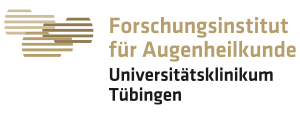This new paper is part of the work of the NIH-funded BRAIN initiative cell census network (BICCN).The aim of the initiative is to fully characterize the cellular taxonomy of neurons in the cortex of mice, monkeys and humans with the goal of providing better targets for developing treatments for neuropsychiatric and neurodegenerative diseases.
As animals can be grouped into species and assembled in a hierarchy of phylogenetic relationships to form the “tree of life”, neurons in the brain are thought to form discrete cell types, which in turn can be cast in a hierarchy of neuronal families and classes. The current view is that a neuronal cell type is characterized by a common genetic profile, giving rise to distinct physiological and anatomical properties including connectivity patterns. High-throughput single-cell sequencing techniques have recently identified dozens of neural types based on their genetic profiles. It has been difficult to collect the necessary data allowing to find out about the anatomy and physiology of these genetic types. This is crucial to understand the role of these cell types in brain computations and its diseases.
In the paper, the scientists including researchers from the University of Tübingen, the Baylor College of Medicine in Houston, USA, and Karolinska Institute in Stockholm, Sweden, used an experimentally challenging technique called Patch-seq to collect a large data base of multimodal data, including genetic, anatomical and physiological information of more than 1300 cells from the mouse motor cortex. Using machine learning techniques, the researchers found that broad genetic “families” of neurons had also largely distinct phenotypes, but that within these groups, anatomical and physiological properties varied continuously. Importantly, some genetic types also showed highly variable properties. In parallel work published simultaneously in Cell, scientists of the Allen Institute in Seattle, USA, obtained similar results.
Dmitry Kobak from the University of Tübingen, the lead data analyst on the paper, explains: “We think that the ‘tree of cortical cell types’ may look more like a banana tree with few large leaves rather than an olive tree with many small ones.” In this metaphor, suggested by the team leader Andreas Tolias (Baylor College), neurons follow a hierarchy consisting of distinct, non-overlapping branches at the level of families (the large leaves), but with a spectrum of cells forming continuous and correlated genetic, anatomical, and physiological variation within each leaf.
Link to the publication: https://www.nature.com/articles/s41586-020-2907-3



